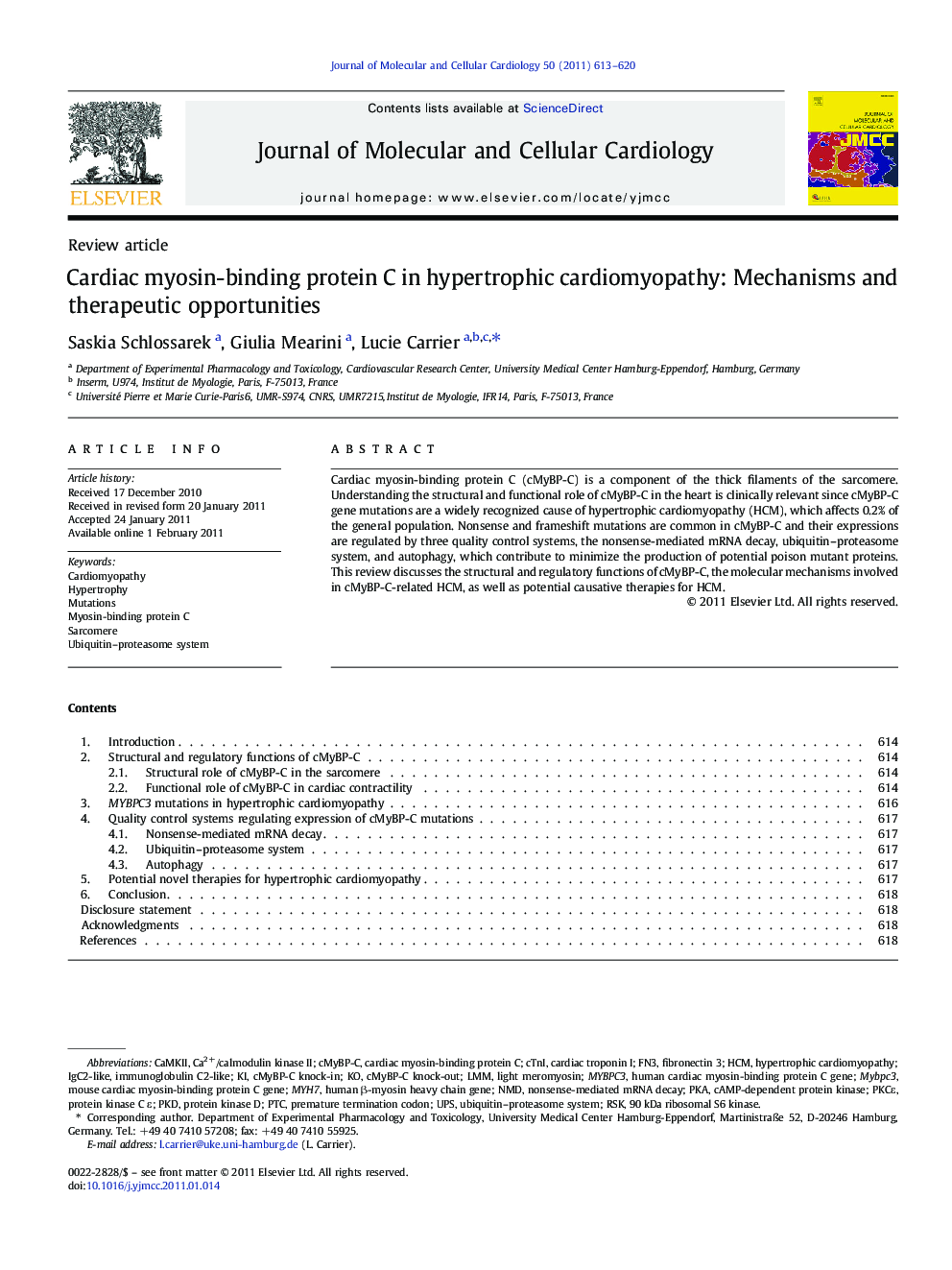| Article ID | Journal | Published Year | Pages | File Type |
|---|---|---|---|---|
| 2190858 | Journal of Molecular and Cellular Cardiology | 2011 | 8 Pages |
Cardiac myosin-binding protein C (cMyBP-C) is a component of the thick filaments of the sarcomere. Understanding the structural and functional role of cMyBP-C in the heart is clinically relevant since cMyBP-C gene mutations are a widely recognized cause of hypertrophic cardiomyopathy (HCM), which affects 0.2% of the general population. Nonsense and frameshift mutations are common in cMyBP-C and their expressions are regulated by three quality control systems, the nonsense-mediated mRNA decay, ubiquitin–proteasome system, and autophagy, which contribute to minimize the production of potential poison mutant proteins. This review discusses the structural and regulatory functions of cMyBP-C, the molecular mechanisms involved in cMyBP-C-related HCM, as well as potential causative therapies for HCM.
Research highlights► Cardiac myosin-binding protein C (cMyBP-C) is a component of the sarcomere. ► cMyBP-C has structural and regulatory functions in cardiomyocytes. ► cMyBP-C mutations frequently cause hypertrophic cardiomyopathy (HCM). ► mRNA and protein quality control systems regulate the expression of the mutations. ► RNA-based therapies may be suitable to treat the cause of HCM.
